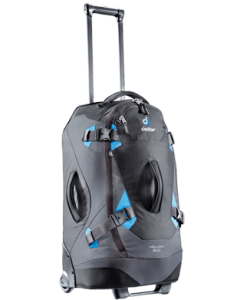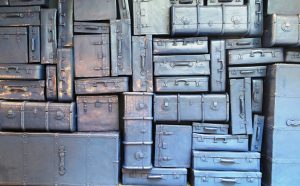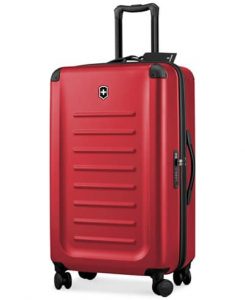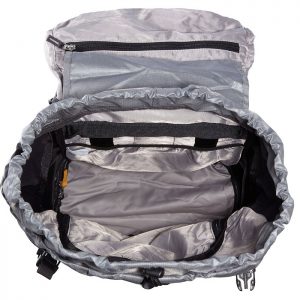With limitless options available in the market, buying bags may seem like the easiest thing to do, but if you take into consideration the ramifications of your decision: it isn’t exactly cheap, will occupy a lion’s share of your storage space and will be your travel companion for a few years atleast, you will understand why this needs to be an informed decision. So, here’s our quick guide on things to consider before you select your next travel companion:
 How do you intend to use it: While the type of bag you need comes from the kind of trip you’re taking, sometimes your travel calendar is just not as easily defined. If your travel itinerary includes a business trip that later becomes a beach holiday with a trek thrown in, you need something that will see you through all your plans. Thanks to major material and design innovations over the last decade, there is a whole range of hybrid bags that offer never before seen versatility in what a single piece of luggage can do. For eg, Rucksacks with trolleys, suitcases that can be converted into a backpack etc. For example, the Deuter Helion bag packs like a suitcase, can be spun around like a strolley and has hidden straps that can convert it into a backpack in seconds. So if you are someone who wants to jump seamlessly from a business trip to a backpacking one, consider hybrid designs before you get boxed in!
How do you intend to use it: While the type of bag you need comes from the kind of trip you’re taking, sometimes your travel calendar is just not as easily defined. If your travel itinerary includes a business trip that later becomes a beach holiday with a trek thrown in, you need something that will see you through all your plans. Thanks to major material and design innovations over the last decade, there is a whole range of hybrid bags that offer never before seen versatility in what a single piece of luggage can do. For eg, Rucksacks with trolleys, suitcases that can be converted into a backpack etc. For example, the Deuter Helion bag packs like a suitcase, can be spun around like a strolley and has hidden straps that can convert it into a backpack in seconds. So if you are someone who wants to jump seamlessly from a business trip to a backpacking one, consider hybrid designs before you get boxed in!
- Do you need hard or soft sided luggage: There is a perception that hard-sided bags are more durable. But with strong new materials (think, ballistic nylon fabric) now being used for soft-sided ones that is no longer necessarily accurate. The other challenge arises when your hard luggage sees any wear and tear – cracks and dents can rarely be repaired and even though your bag still might be functional, it is an unsightly addition to your travel style. Soft-sided bags give you more flexibility in terms of being able to stuff in more things, but hard-sided bags will ensure your “achchar” bottle remains intact. Finally, what you also need to be mindful of is how you will be storing this piece of luggage after the trip. Of course, the last one is easily sorted if you choose to rent your bags!
- What size do you need: This can be a tricky one; two factors you need to consider
 Airline rules around baggage allowances: Bags come in two primary size classifications: check-in and carry-on. Now, there is no uniform standard that is followed worldwide for air travel, every airline has their own set of restrictions which can vary with different aircrafts. Luckily, we have it all sorted out in our blog here, giving you a ready reckoner of bag sizes allowed by all major airlines (you can thank us by sharing the blog :)).
Airline rules around baggage allowances: Bags come in two primary size classifications: check-in and carry-on. Now, there is no uniform standard that is followed worldwide for air travel, every airline has their own set of restrictions which can vary with different aircrafts. Luckily, we have it all sorted out in our blog here, giving you a ready reckoner of bag sizes allowed by all major airlines (you can thank us by sharing the blog :)).
 Length of your trip and packing habits: When it comes to luggage, bigger is decidedly not better. A general rule of thumb is, for carry-ons, go for a size adjustable options that are easy and comfortable to carry (spoil yourself with something fancier here, as this bag will stay with you constantly). For larger bags, limit your packing to a size you can manage to carry on your own for atleast three flights of stairs. Check out our tips on packing frugally, here. Please consider the storage space and dimensions, a bag would occupy in your home as well when deciding on the right size for you.
Length of your trip and packing habits: When it comes to luggage, bigger is decidedly not better. A general rule of thumb is, for carry-ons, go for a size adjustable options that are easy and comfortable to carry (spoil yourself with something fancier here, as this bag will stay with you constantly). For larger bags, limit your packing to a size you can manage to carry on your own for atleast three flights of stairs. Check out our tips on packing frugally, here. Please consider the storage space and dimensions, a bag would occupy in your home as well when deciding on the right size for you.
- Build and Functionality: The anatomy of the bag is as important when trying to come to a decision. See some pointers on what to check when examining a bag below:
 First, check the stitch quality as that is the first thing to go in a bag.
First, check the stitch quality as that is the first thing to go in a bag.- Check whether the bag has a coil or chain zipper. The chain zipper is generally considered most secure, as it has two sets of interlocking teeth, usually made of metal, making it stronger and safer. A YKK zipper is widely believed in the industry to be the most reliable.
- The handle is equally important, so check the wrist angle and the feel of the grip. For maximum durability, the handle should have little to no wiggling or rattling as you pull or lift the bag.
- For trolleys, check for smooth movement as you pull up the handle and retract it.
- For bigger bags, a four wheeler bag may make more sense rather than the two wheeler, simply because of the easy mobility it offers.
- Protective extras such as cornerguards, kickplates, replaceable wheels etc can extend the life of a bag and keep them looking good.
- Finally, the warranty period may be the deciding factor here, as it shows the manufacturer’s confidence in the build quality of his product – anything less than 2 to 5 years is not a so great.
 Interior capacity and design: While the outside measurements are important, don’t forget to consider how roomy the inside is. This can be hard to do because many manufacturers do not disclose the interior volume. Look for features that maximize interior space. For example, squared edges are generally more spacious than rounded ones. Additional features such as compression straps, separate pockets for wash clothes etc can keep your clothes intact and help you organize them better. Another thing to ensure is that the outer compartments or haul handles aren’t designed in a way to make the bag protrude, which could end up changing the final dimensions of your bag.
Interior capacity and design: While the outside measurements are important, don’t forget to consider how roomy the inside is. This can be hard to do because many manufacturers do not disclose the interior volume. Look for features that maximize interior space. For example, squared edges are generally more spacious than rounded ones. Additional features such as compression straps, separate pockets for wash clothes etc can keep your clothes intact and help you organize them better. Another thing to ensure is that the outer compartments or haul handles aren’t designed in a way to make the bag protrude, which could end up changing the final dimensions of your bag.
Ofcourse, given all these complications, you should consider Trying the bag before Buying it (Ahem!Bragpacker is the only place which allows you to!) or be really smart and never buy a bag at all! Renting a bag will save you considerable money upfront, free you from maintenance and storage woes and ensure that you always have the right bag for your needs. Just makes sense to “Save on luggage and spend on experiences“



aditi
Great article! I am a luggage lover and love to purchase different kinds of luggage. few from my favorite clooections belong to traworld . They are amazing! http://www.traworldluggage.com